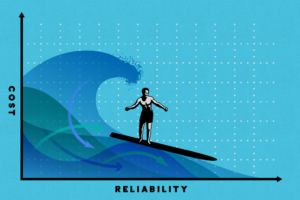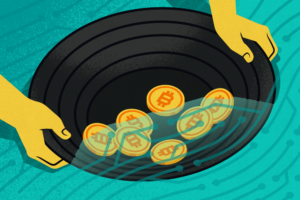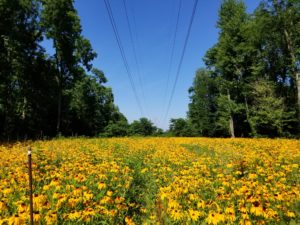Facts, Figures, and Findings from EPRI Research, Reports, and Other Sources

With Strategically Placed ‘Mesonet,’ Ameren Missouri Reduces Forecast Error by 40% EPRI, Ameren Missouri, and Saint Louis University demonstrated that carefully designed mesonets coupled with customized models can provide utilities with weather forecasts superior to traditional sources alone. Forecasts from those sources, such as the National Weather Service, The Weather Channel, and AccuWeather, do not provide local detail necessary to guide crew positioning ahead of severe weather. Regionally configured mesonets can potentially provide more precise data to weather- and damage-forecasting models, enabling better utility response. Using Saint Louis University’s QuantumWeather® algorithm, researchers determined the optimal placement of more than 100 ...
Read More
Read More

EPRI Develops Better Methods for Calculating Reserves Grid operational changes that improve reliability typically increase costs. An EPRI study of Hawaii’s Oahu grid reveals that grid operators can have their cake and eat it too: More robust methods for quantifying the necessary capacity of operating reserves can increase reliability and reduce costs. Increasingly, operators rely on reserves to accommodate intermittent renewable energy generation. The challenge is to determine the optimal reserve capacity needed based on anticipated conditions. Too much can be costly, and too little can make the system less reliable. Many of today’s methods for calculating reserve capacity are ...
Read More
Read More

There is significant uncertainty in quantifying energy use by bitcoin mining, according to an EPRI Quick Insights paper. Bitcoin digital currency is released into circulation through “mining.” As with other digital currencies, bitcoin is backed by blockchain technology, which uses cryptography to verify transactions and add them to the public record. To do this, a “miner” must solve a complex mathematical puzzle, which requires powerful computer hardware and significant electricity consumption. Successful miners receive a financial reward. As the value of bitcoin has skyrocketed since late 2017, so has the number of miners—and the difficulty of the puzzles. Absent a ...
Read More
Read More

Significant changes in traditional electric company resource planning are needed to enable the industry’s ongoing transformation, according to an EPRI white paper. With growing renewable energy and distributed energy resources, multidirectional power flow, increasing customer choice and control, and other significant changes, electric companies’ long-term resource planning tools, methods, and processes may no longer be adequate for sustaining and updating a modern power system. According to the paper, planners face growing challenges related to grid modeling (such as understanding the reliability impacts of solar and wind), integrating forecasts (such as those for load, deployment of distributed resources, renewable energy production, ...
Read More
Read More

Above photo: Prairie species planted on a right-of-way in the service territory of American Electric Power. Photo courtesy of Shana Byrd, The Dawes Arboretum. In field tests in Ohio, EPRI, American Electric Power (AEP), and the Dawes Arboretum demonstrated the establishment of biodiverse prairie habitat along a transmission right-of-way. To maintain reliability along power line corridors, utilities must plant and manage vegetation, control erosion, and trim or remove trees that encroach on grid equipment. Typically, corridors are dominated by non-native grasses and weedy species, which offer poor habitat for native wildlife and require regular tree removal, mowing, and herbicide treatments ...
Read More
Read More

